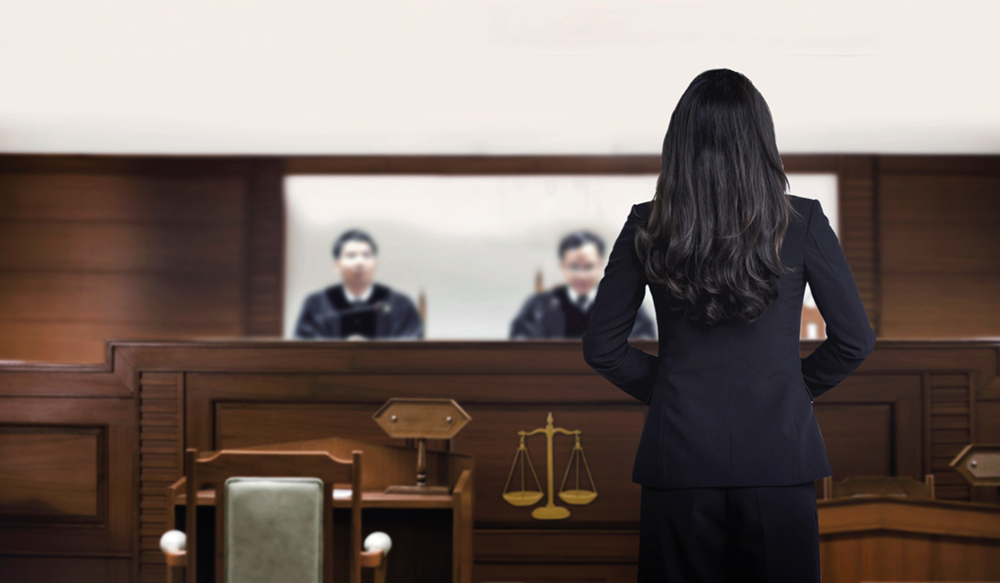Essential Skills for Crafting Persuasive Trial Presentations: A Comprehensive Guide
Essential Skills for Crafting Persuasive Trial Presentations: A Comprehensive Guide
Blog Article
Browsing the Intricacies of Test Presentations: Tips for Seamless Shipment and Compelling Disagreements
In the realm of legal proceedings, the art of test discussion stands as a crucial component of success. The intricacies integral in trial presentations call for a delicate balance of ability, method, and finesse.

Understanding Test Goals
To successfully navigate a test, it is critical to have a clear understanding of the objectives that need to be attained. Before tipping right into the courtroom, lawful teams should define their objectives and desired end results. These objectives act as leading concepts throughout the trial, forming techniques and influencing decision-making processes.
Understanding trial objectives entails a detailed analysis of the instance, lawful precedents, and the client's best rate of interests. Trial Presentations. It requires a thorough assessment of the facts, determining key problems, and expecting possible obstacles. By establishing quantifiable and specific goals, lawyers can customize their discussions and disagreements to straighten with the preferred results
In addition, a clear grasp of trial goals makes it possible for legal groups to prioritize proof, witnesses, and legal debates successfully. It permits for the growth of a systematic narrative that resonates with the judge and jury, strengthening the general instance presentation.

Organizing Evidence Efficiently
Having a clear understanding of trial purposes lays the foundation for organizing proof effectively in lawful procedures - Trial Presentations. By lining up the presentation of proof with the preferred end results of the trial, lawful groups can enhance their arguments and enhance their persuasiveness. One critical element of organizing evidence is classification. Organizing evidence based upon themes or significance to certain legal components can aid improve the discussion and make complicated information more absorbable for the court or jury.
One more secret component in arranging evidence efficiently is developing a rational flow. Offering evidence in a consecutive and systematic way can help build a compelling narrative that sustains the legal arguments being made. Additionally, making use of aesthetic aids such as timelines, charts, or graphs can additionally boost the organization of proof and assist in clearing up complex relationships or sequences of occasions.
Furthermore, making sure that all evidence presented is acceptable and pertinent to the instance is important. Irrelevant or inadmissible proof can detract from the toughness of the disagreement and potentially harm the reputation of the providing celebration. A precise evaluation and selection process should be taken on to consist of just the most legally sound and impactful proof in the trial presentation.
Crafting Convincing Stories
Crafting engaging narratives plays a crucial duty in presenting convincing disagreements during lawful procedures. When building a narrative for a test presentation, it is vital to develop a clear storyline that highlights crucial factors and links them in a meaningful fashion. By weaving with each other proof, testament, and lawful arguments into a persuasive and cohesive narrative, legal professionals can successfully support for their customers and raise the likelihood of a beneficial outcome in the courtroom.
Grasping Aesthetic Aids
Efficient use visual help is key to improving the influence and quality of trial presentations. Aesthetic aids, when used strategically, have the power to simplify intricate details, strengthen vital factors, and leave a lasting impact on the discretionary. To understand aesthetic aids in test presentations, it is crucial to guarantee that they are clear, succinct, and relevant to the disagreements being made.
When including visual aids, such as charts, graphs, timelines, or pictures, right into a test discussion, it is vital to maintain them visually appealing yet expert. The visuals should complement the verbal disagreements, supplying a graph of the details being discussed without overwhelming the target market with unneeded information.
In addition, practicing with the aesthetic aids in advance is critical to make certain a seamless delivery during the test. Acquainting oneself with the web content, changes, and timings of each visual help can assist keep the circulation of the presentation and protect against technical problems that might emerge.
Delivering Impactful Closing Arguments
An engaging closing debate offers as the end result of a test discussion, enveloping the core story and persuading the court and court in the direction of a beneficial decision. Begin by describing the primary arguments that support your client's setting, stressing why the evidence offered throughout the test sustains your narrative.
Moreover, integrating psychological allure can further reinforce your closing argument. By attaching and humanizing the case on an individual degree with the decision-makers, you can stimulate compassion and understanding, affecting their assumption of the truths provided. Additionally, restating the lawful criteria that must be satisfied for a favorable judgment can enhance the validity of your position. Ultimately, a well-crafted closing debate ought to leave a long lasting perception, engaging the court and court to rule in your customer's have a peek at these guys support.
Conclusion
Finally, grasping trial discussions entails comprehending goals, organizing evidence, crafting narratives, using aesthetic aids, and supplying impactful closing arguments. By applying these methods successfully, legal representatives can offer their case perfectly and make compelling disagreements in the courtroom. It is essential to navigate the complexities of trial discussions with precision and skill to attain success in legal procedures.
By lining up the discussion of evidence with the preferred outcomes of the trial, legal groups can reinforce their arguments and enhance their persuasiveness (Trial Presentations). To understand visual help in test presentations, it is vital to make sure that they are clear, succinct, and appropriate to the disagreements being made
A compelling closing disagreement serves as the culmination of a test discussion, encapsulating the core story and convincing the judge and court towards a favorable choice. Begin by detailing the primary arguments that sustain your client's placement, highlighting why the evidence offered throughout the trial sustains your narrative.In verdict, grasping trial check my site discussions involves Get More Information recognizing goals, arranging evidence, crafting stories, using aesthetic aids, and supplying impactful closing disagreements.
Report this page